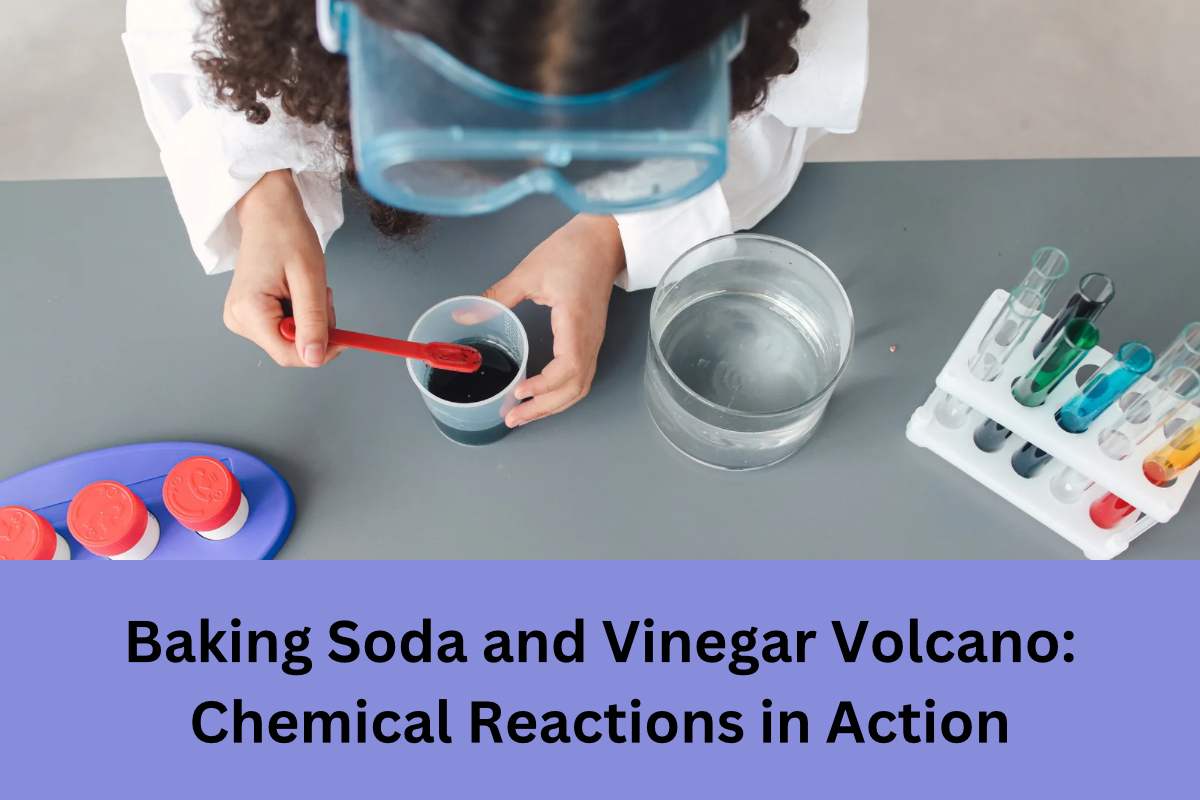Baking Soda and Vinegar Volcano: Chemical Reactions in Action
By~ Scholar Planet
Created At: 01 Oct, 2023

When it comes to captivating science experiments that combine fun and education, the baking soda and vinegar volcano takes center stage. This classic experiment not only creates an impressive eruption but also provides an engaging way to explore the fundamentals of chemical reactions, acids, and bases. So, put on your lab coat (or apron) and let's dive into the world of scientific discovery!
Ingredients:
- A small empty plastic bottle
- Baking soda
- Vinegar
- Red food colouring (optional for a realistic lava effect)
- Dishwashing soap (optional for foamy lava)
- Craft paper or clay (to build the volcano structure)
- Safety goggles (to protect your eyes from splashes)
- A tray or newspaper (to contain the mess)
Building Your Volcano:
1. First, you'll need to create the volcano structure. Start by placing the small plastic bottle in the center of your tray or newspaper. This bottle will serve as the "volcano core."
2. Now, use craft paper or clay to mould the volcano shape around the bottle. Get creative with your design, making it look as realistic as you want.
3. Once your volcano structure is complete and has dried (if you used clay), you're ready to move on to the chemical reaction part of the experiment.
The Chemical Reaction:
1. Put on your safety goggles to protect your eyes.
2. Pour a couple of tablespoons of baking soda into the bottle at the center of your volcano structure. You can use a funnel to make this step easier.
3. If you want to create a more dramatic effect, add a few drops of red food colouring and a squirt of dishwashing soap to the baking soda in the bottle.
4. Now, it's time to create the eruption. Pour vinegar into the bottle, and watch the magic happen! As the vinegar reacts with the baking soda, it produces carbon dioxide gas, which creates pressure inside the bottle. This pressure forces the mixture (resembling lava) to erupt out of the top of the volcano structure.
5. Keep adding vinegar as needed to maintain the eruption. You can repeat this step several times to enjoy the volcanic display.
The Science Behind the Eruption:
This experiment showcases a fundamental chemical reaction between an acid (vinegar) and a base (baking soda). When these two substances combine, they produce a chemical reaction that releases carbon dioxide gas (CO2). The gas builds up pressure inside the bottle until it can no longer be contained, causing the "volcanic eruption."
The addition of red food colouring and dishwashing soap adds a touch of realism to the experiment, making the eruption resemble flowing lava.
Conclusion:
The baking soda and vinegar volcano experiment illustrates the basics of chemical reactions, acids, and bases in a hands-on and exciting manner. So, the next time you're looking for a fun and educational activity, gather your materials and create your very own volcanic eruption – it's science in action!
